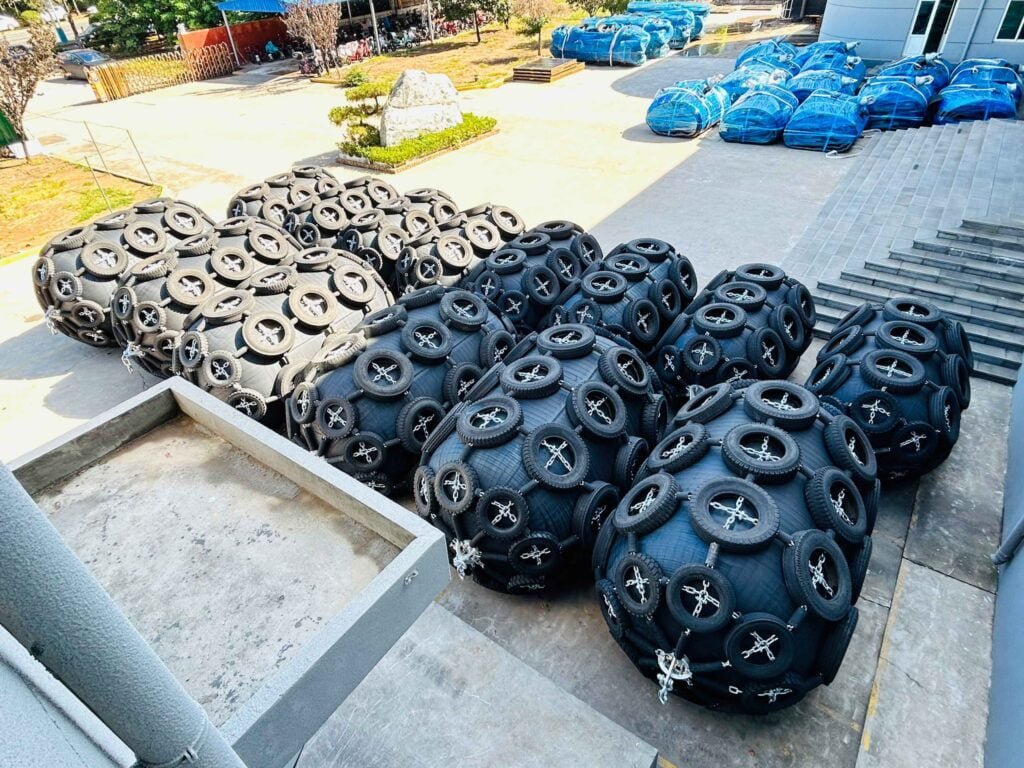اختبار أداء السلامة للمصدات الهوائية
07/02/2024الوظائف الأساسية للمصدات الهوائية
07/04/2024المعايير الدولية للمصدات الهوائية

Ships and port facilities around the world need to follow strict standards to ensure safe operations. Here are several major international standards that provide guidance for the design, testing and use of pneumatic fenders :
1. ISO 17357-1:2014
Standard Name: Inflatable Rubber Pneumatic Fenders – High Pressure
Content Overview: This standard defines the design, manufacturing, and testing requirements for high-pressure inflatable pneumatic fenders, including material selection, manufacturing process, dimensional tolerances, performance testing, and acceptance criteria. It is applicable to berthing operations of various ships and ensures the safe performance of the berthing balls under high pressure.
2. ISO 17357-2:2014
Standard Name: Inflatable Rubber Pneumatic Fenders – Low Pressure
Content Overview: This standard is aimed at the design and testing requirements of low-pressure inflatable pneumatic fenders, including compression and recovery characteristics, compressive strength and durability testing. This type of berthing ball is mainly used for small ships and special environments.
3. PIANC 2002 Guidelines
Standard name: Design standards for berthing and mooring facilities
Content overview: The guidelines issued by the International Waterway Association (PIANC) describe in detail the application standards of pneumatic fenders in docks and port facilities, including energy absorption performance, installation location, size selection and maintenance requirements. These guidelines help port and terminal facility designers ensure the effectiveness and safety of berthing systems.
4. BSI PAS 2070:2021
Standard name: Performance and safety requirements for pneumatic fenders
Content overview: The public standard specification for performance and safety requirements for pneumatic fenders issued by the British Standards Institution (BSI) covers the design, manufacture, testing and installation standards of berthing balls. This standard applies to various types of pneumatic rubber fenders to ensure their safety and reliability in actual use.
5. OCIMF Fender Guidelines
Standard Name: Guidelines for Fender Systems for Tanker Terminal Facilities
Content Overview: The Guidelines for Fender Systems for Tanker Terminal Facilities issued by the International Coalition of Voluntary Offshore Oil Companies (OCIMF) provide detailed recommendations on the selection, installation and maintenance of fenders, especially for the special needs of large tankers and offshore facilities.
